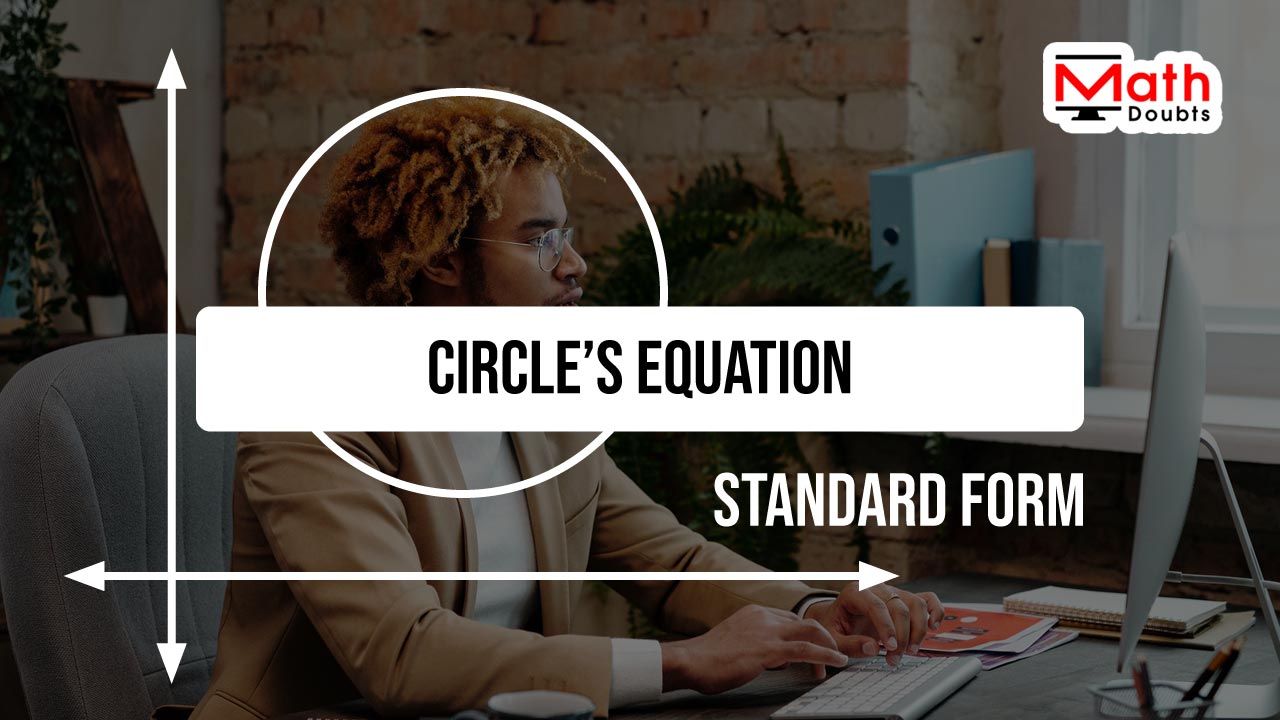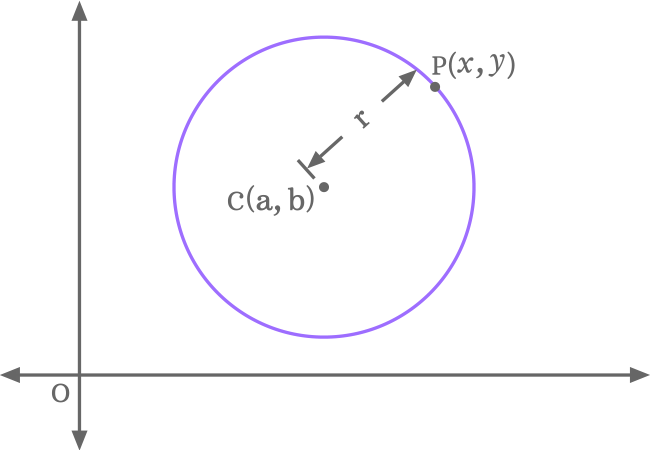$(x-a)^2+(y-b)^2 \,=\, r^2$
A circle without touching any axis of the two dimensional cartesian coordinate system is a standard form of a circle and its equation is called the equation of a circle in standard form.


Let $C$ be a point, which represents the center (or centre) of a circle, $P$ be a point on the circle and the radius of the circle is $r$ units.
Let $a$ and $b$ be the $x$ and $y$ coordinates of center and the centre in coordinate form is written as $C(a, b)$. Similarly, $x$ and $y$ be the coordinates of the point $P$. So, the point $P$ in coordinate form is written as $P(x, y)$ mathematically.
The equation of a circle in standard form is written in mathematics as follows.
$(x-a)^2+(y-b)^2 \,=\, r^2$
$x^2+y^2\,-\,2ax\,\,–\,2by+a^2+b^2-r^2 \,=\, 0$
The standard equation of a circle is also popularly written in other form by denoting the coordinates of the center with $h$ and $k$. It means, the centre of a circle in coordinate form is $C(h, k)$.
$(x-h)^2+(y-k)^2 \,=\, r^2$
$x^2+y^2\,-\,2hx\,\,–\,2ky+h^2+k^2-r^2 \,=\, 0$
Learn how to derive the equation of a circle in general form when the circle does not touch both axes.
A free math education service for students to learn every math concept easily, for teachers to teach mathematics understandably and for mathematicians to share their maths researching projects.
Copyright © 2012 - 2025 Math Doubts, All Rights Reserved